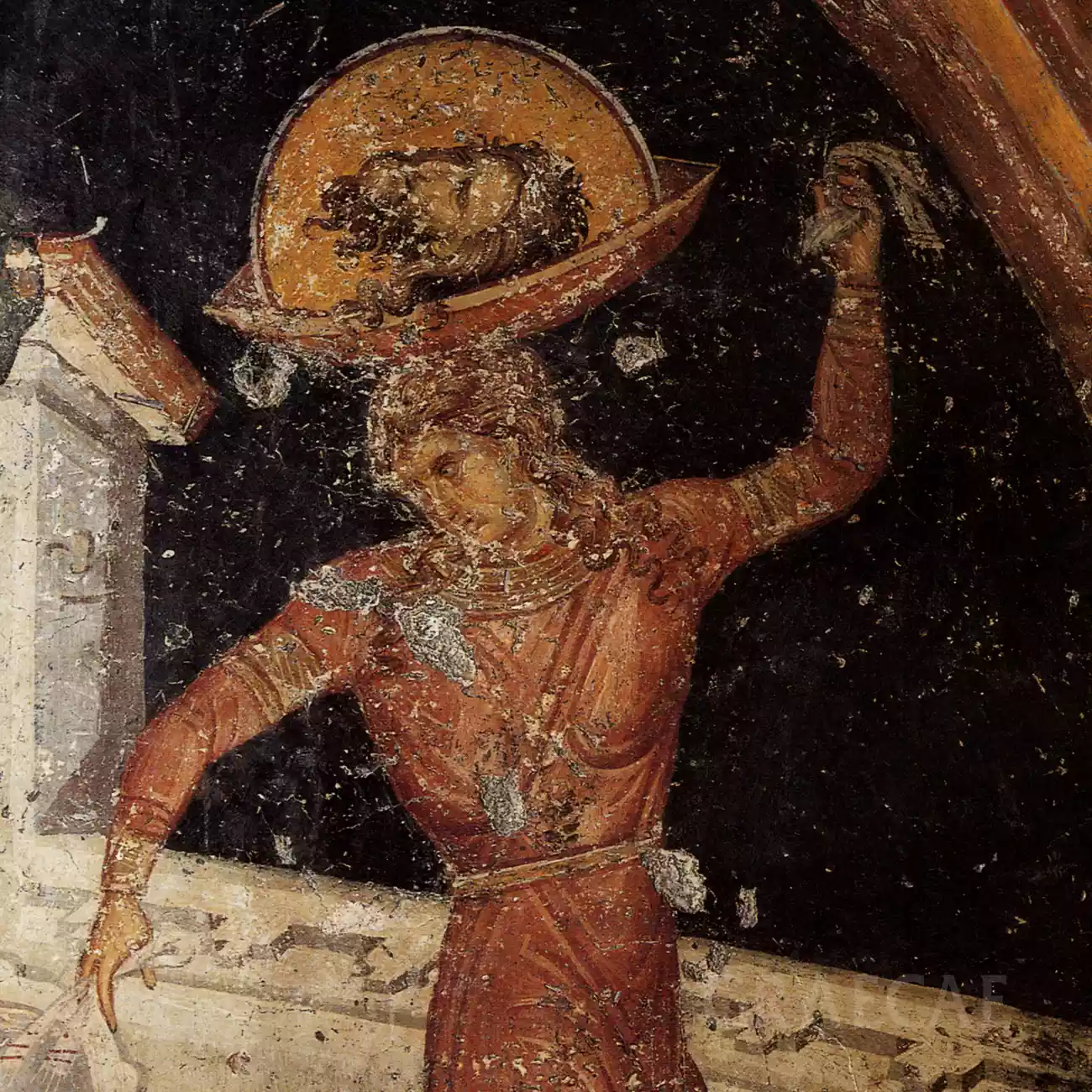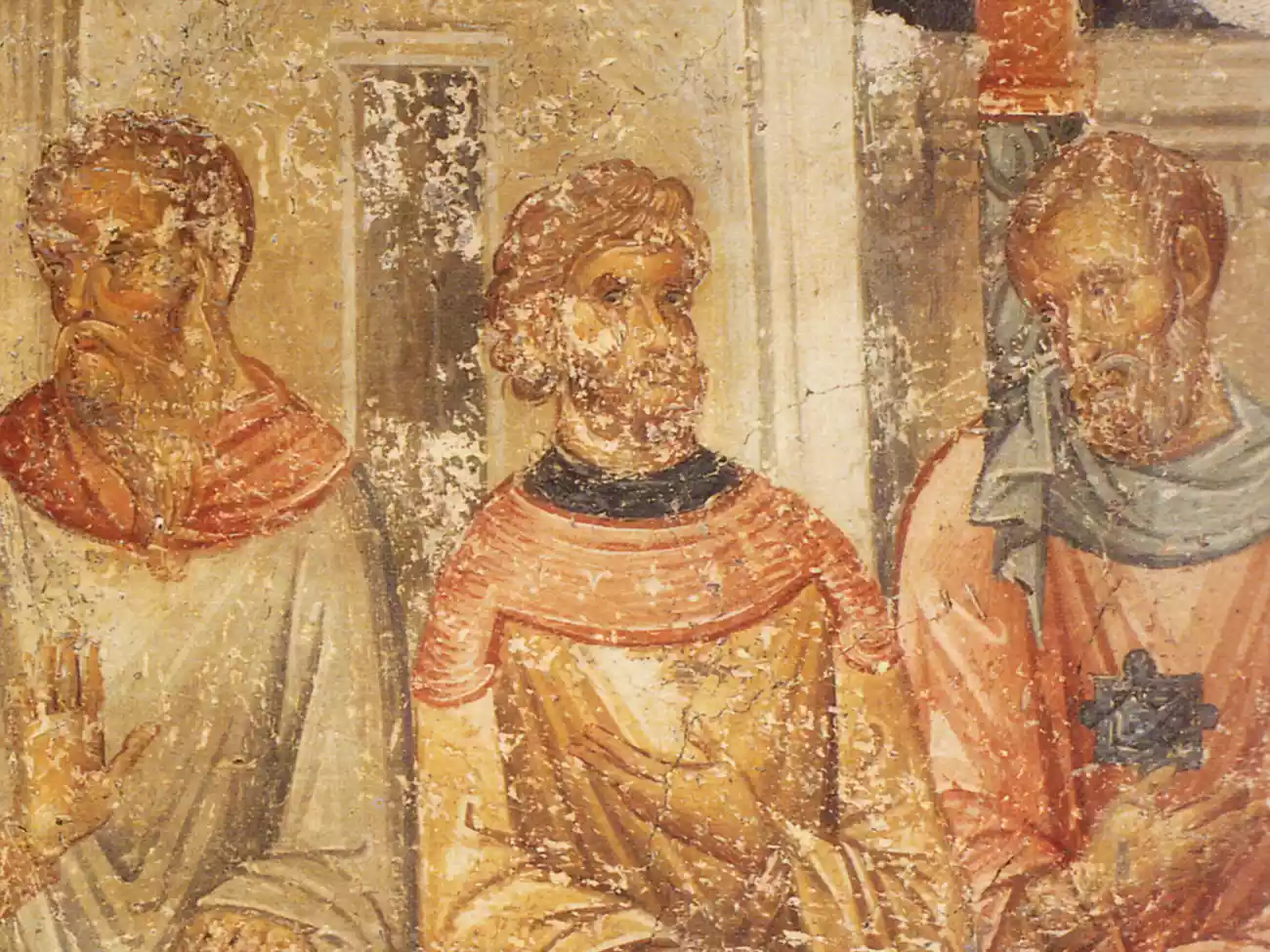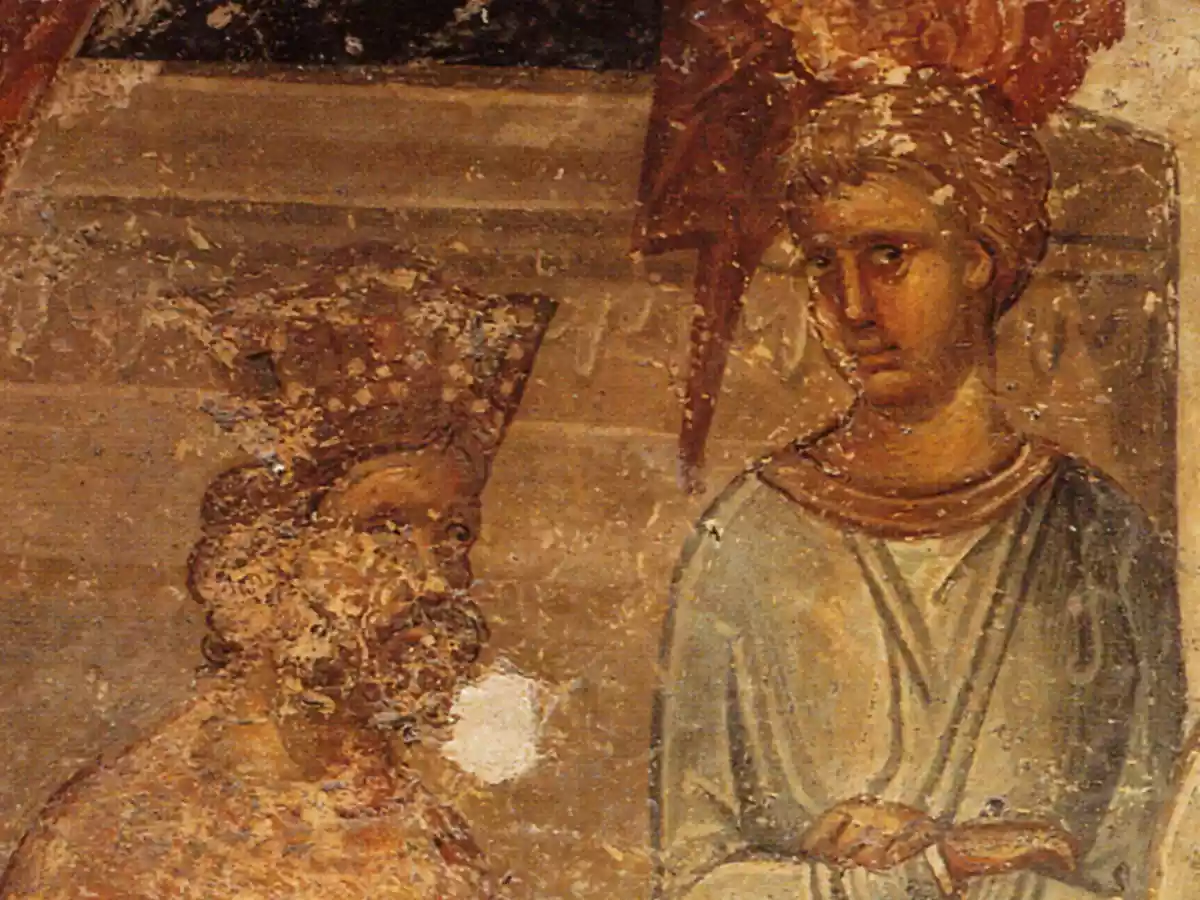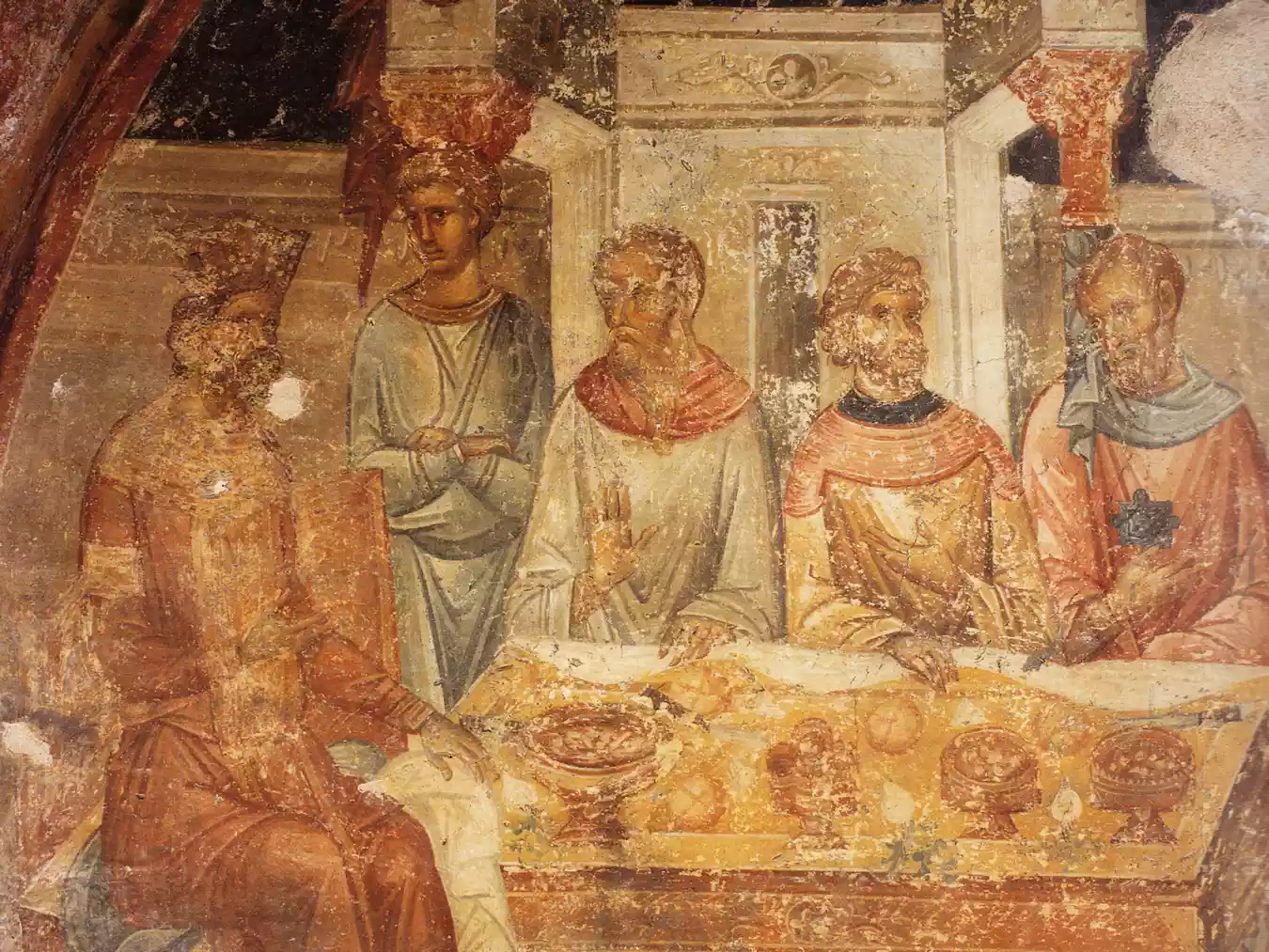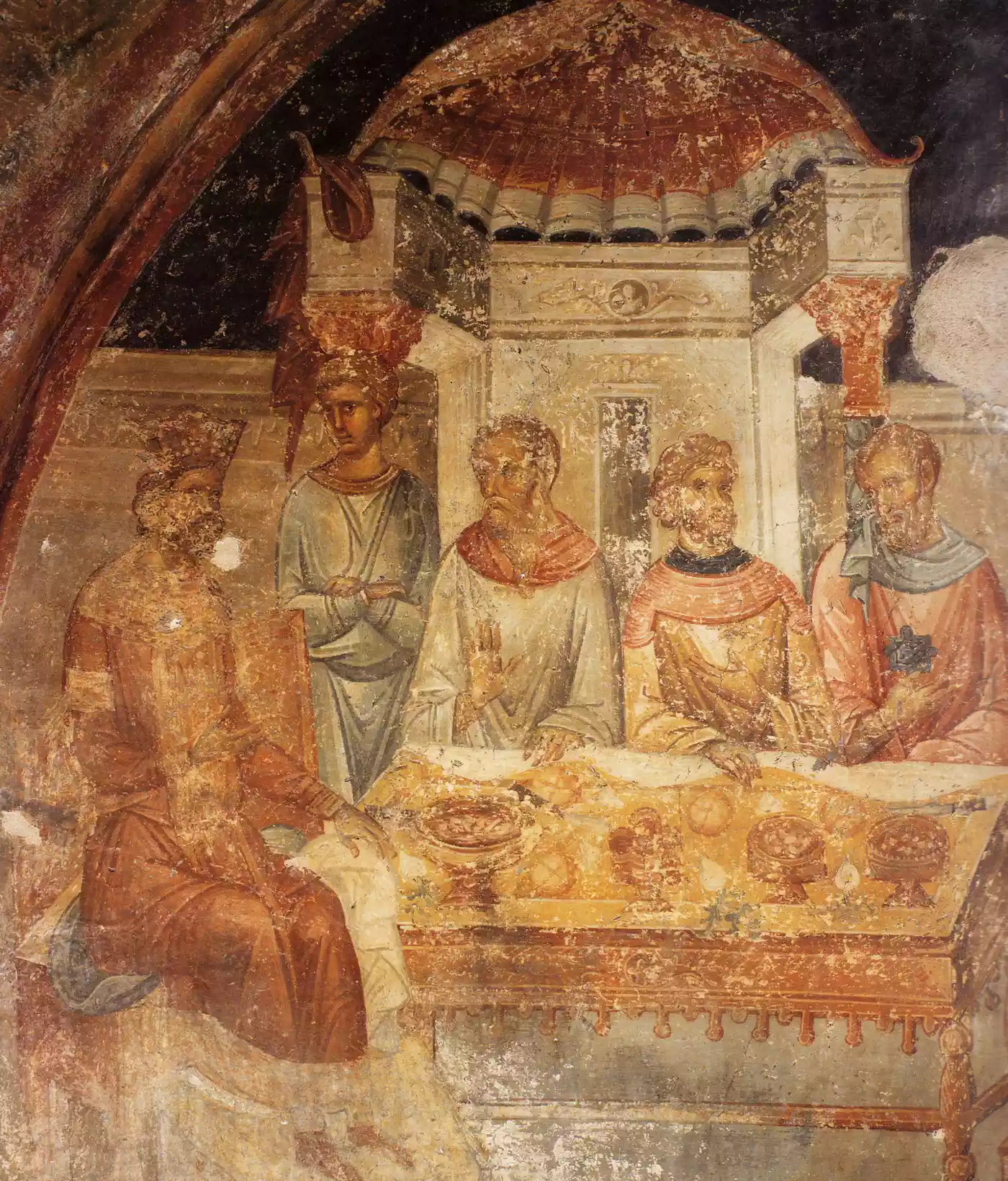In the side-chapel of the Forerunner, in the church of the Holy Apostles in Thessaloniki, a certain wall-painting, painted around the years AD 1310-1320, represents the feast of Herod. We see the tetrarch seated upon a throne, conspicuous indeed in his robe, but having his gaze unsettled and his soul troubled. And beside him the fellow-banqueters sit in silence, as if downcast in expectation of some evil. This icon is not only an evangelical narrative, but also a testimony of the art of that time, which flourished in the misfortune of the empire. For the church of the Holy Apostles, just as also other monuments of the city, preserved the art of Constantinople in the second city of the dominion (Katsoulis). This scene, being a part of the life of the Forerunner, foreannounces the tragic end of the man, and this it does not simply, but with a psychological intensity which one would rarely find before the renaissance of the Palaiologoi.
The psychography of the persons and the rationale of the space
What is it that makes this painting differ? Not the golden garments, nor the luxury of the supper. It is the human soul, inscribed in the faces.
The characters of the ones depicted
The painter, whoever he was, was masterful at showing the characters. For he made Herod having his gaze fixed upon Salome, not as one simply in love, but as one captive to passion and perplexity, and his form reveals a man divided within himself, having indeed given his word, but dreading the deed—and this gaze almost explains the entire story. And his companions, some sit deep in thought, while others whisper to one another, as if sensing the approaching defilement. But one servant stands indifferent, having an unexpressive face; for to this one, nothing matters of the royal errors. This differentiation of the characters, this penetration into the depth of the soul, this very thing is the newer element of Palaiologan art.
The architectural space as a stage
And then the space. The action takes place before a domed portico of the palace, and this architectural detail provides a certain depth and a certain stage-like disposition to the icon. And the window in the middle, which cuts the scene in two, separates indeed the fellow-banqueters from the female dancer, but connects the two parts of the tragedy; from here indeed the cause, and from there the result. The columns and the ornaments of the edifice not only signify the wealth of Herod, but also constitute a kind of spiritual prison, in which the persons of each drama are enclosed. The space becomes a theatre. And after these things, what? The silence.
